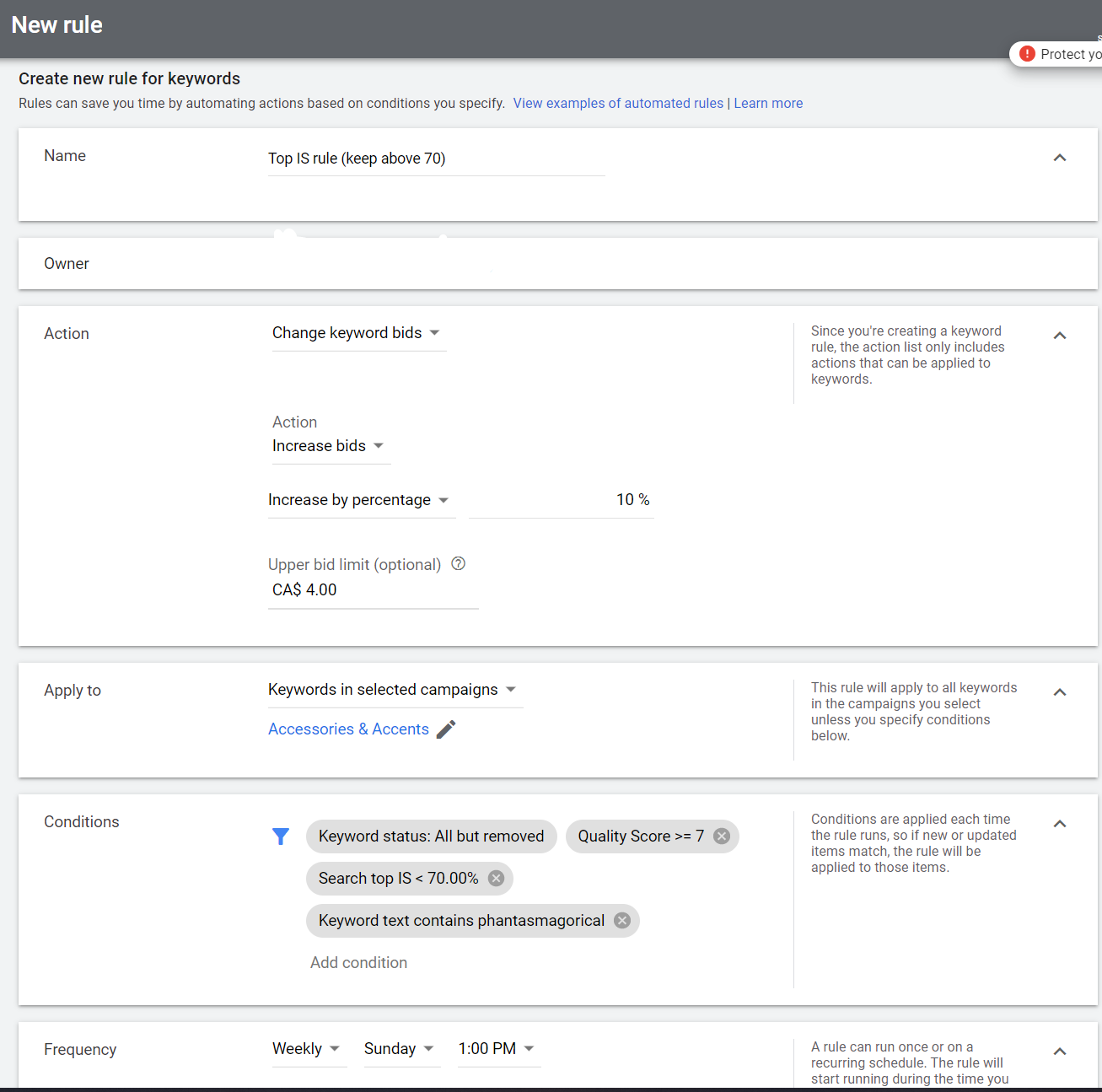
Many PPC’ers were distraught when, in 2019, Google sunsetted the average ad position metric in Google Ads. That metric was one of our go-to decision criteria for bid aggressiveness. Even if your approach to bidding should align with financial KPI’s like CPA (Cost/Conv.) or ROAS (Conv. Value/Cost), you don’t want to “bid through the top of the auction,” so monitoring position would be useful to avoid being goaded (by very high ROAS, say) into bidding higher than you need to. Conservative approaches to bidding also help us to avoid the dreaded “bidding war dynamic” where advertisers are collectively cutting off their noses to spite their competitor’s face (and handing Google the spoils of war).
Conversely, if some keywords are bid so conservatively that they aren’t getting enough visibility to “have a chance” to perform, then it might be wise to “wake them up.” Bidding strategies need to take into account how to factor in low-volume keywords, since a few hundred or thousand of those can add up to a lot of neglected account potential.
The problem, Google argued, was that the Average Position metric was misleading. An aggregate score here didn’t reflect the many different types of user sessions, devices, competitor behavior, etc. Keywords with marginal Quality Scores and high bids, for example, might often show up in the first or second position when they did show up, but their eligibility in the auction was weak, so they generally garnered low impression shares. An even more aggressive bid could help the business achieve its goals. All in all, using Average Position as the only competitive metric led advertisers to ineffective decision-making, in Google’s view.
Of course, there are serious optics issues at play here. Google probably discovered that in the main, advertisers exposed to impression share data tended to bid more aggressively, sometimes with alarm at their “low share” for keywords they “should own or feature.” If using new competitive metrics leads to even worse decision-making and advertisers actually losing sight of their KPI’s (being less data-driven), then guess who wins?
(Note: the skeptic’s question should always be “Who decides on what ‘share’ means? Share of what universe?”)
Fortunately, if you take the trouble to reflect on the value of the currently-available Competitive Metrics, you’ll likely find that you don’t miss Average Position at all.
Here, I’m referring specifically to how these help us in Search, as opposed to Display, Shopping, etc.
In my book, the two key Competitive Metrics to use on a regular basis are:
- Search Top IS (Search Top Impression Share), and
- Search Absolute Top IS
Google defines Search Top IS Share as the percentage of impressions you received in the top ad positions, measured by impressions they deem you were “eligible” to receive. “Top” is defined as: “Anywhere ads appear above the organic search results. Eligibility is based on your current ads’ targeting settings, approval statuses, bids, and quality.”
Absolute Top IS is the same idea, but substitute “anywhere ads appear above the organic search results” for “the most prominent” ad position.
A third metric, Search IS, is also sometimes worth looking at. And there are a few others.
At Page Zero, we’ve developed a few rules of thumb to make use of the metrics. Mostly, these apply to performing keywords to provide us a sense of how much “room” there is to bid up without wasting cash. Top IS might well be sufficient, given that “Top” indicates above the fold and indeed above the organic SERP, right in the user’s field of vision. What should we care if the ad position is 1, 2, or 3? I’d say you could do very well to go by this metric alone. If you like the keyword, you’d want this to be above 80%. If you love the keyword, above 90 or 95%.
But there’s a good chance that Absolute Top is meaningful as well. Absolute Top could be a bit more visible and lend your ad more reputation by virtue of Google using its discretion to show larger ad units with more of your ad extensions (especially Expanded SiteLinks and Seller Ratings). Indeed, on phones, don’t be shy! If you love the keyword, Absolute Top could be worth focusing on. But don’t go gaga over it. Some user sessions might not warrant that aggression. Anywhere from 30 to 75% could be a fine range for Absolute Top IS for a keyword you love. 20 to 60% for a keyword you like. Always leave a little room for your competitor to overbid, rather than forcing you both into a vicious cycle of bidding up and up and up.
There are plenty of custom uses for competitive metrics beyond that, of course. But the vast majority of advertisers still don’t even get the basics right.
A quick note about search impression share
Search Impression Share is a more relaxed share measure that is meant to include ads that appear below the organic SERP or even (Google doesn’t say) on pages 1 and 2. It’s not as useful as the other metrics. Here, you can really get in trouble if you assume it should always be really high. This varies wildly depending on your keyword’s quality, its performance, and match types. Take keyword impression share decisions on a case-by-case basis using business logic. Don’t be ego-driven and bump up bids because a share metric “looks low.”
Goodman’s Gambit
Let’s say you’re a smallish business with products you absolutely know delight your customers, and you’ve gotten to the point where you’ve backed away from keyword inventory that is too broad to convert reliably. In short, you like the keyword mix you have, and the KPI’s generally bear out your theories, but they fluctuate to the point of causing confusion.
Based on relatively unreliable marketing attribution (long sales cycles, data loss, etc.), you might see some rather pointless fluctuations in your Top Search Impression share from month to month stemming from that confusion. Why not use that metric to keep you locked in a bit more consistently for keywords you like or love? You could set up an automation using a third-party tool or Google’s own filter or Automate tools, specifically around all the keywords you want to include in this experiment. Check the past seven days of data (every seven days), and if the keyword falls below 70% Search Top IS, bid it up 10%. If it reaches above 90%, bid it down 10%. Of course, you’ll want to continue to monitor your KPI’s and your business performance using common sense (or deep insight, as the case may be).
Note in this example I included a condition that the keyword we wanted to maintain above 70% Top IS should have a high Quality Score (7 or above). We’ll let lower-quality keywords languish if need be.

Figure 1: The Google Ads rule engine. Love it! You can choose to take action based on certain criteria, or just receive email alerts. So it’s very versatile.
As always, Google Ads is a highly competitive game with many permutations and adjustments – a little like chess. Sprinkle in these thought exercises on a regular basis to help you to better understand auction dynamics. Do that, and I’m sure you’ll profit!
Read Part 36: 10 Telltale Characteristics of Failed PPC Accounts